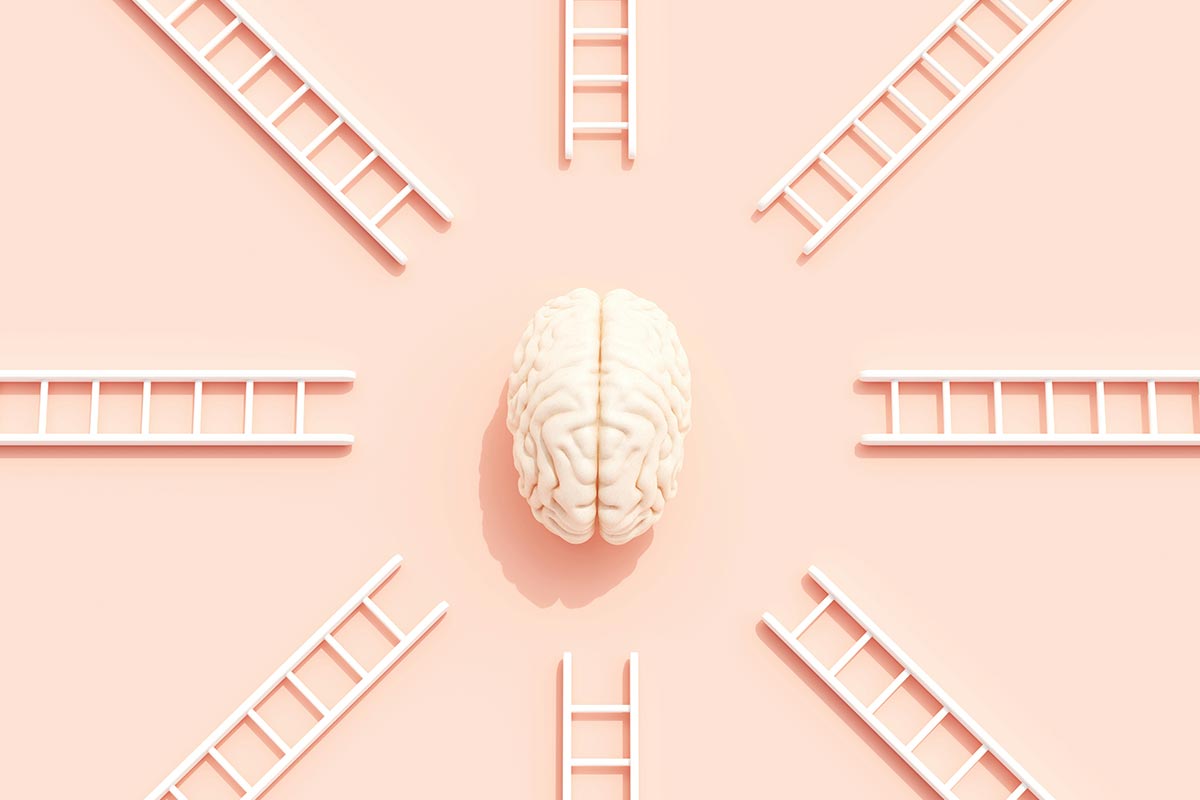California-Based Telehealth Mental Health Services
![]() Redeemed Mental Health
on
April 14, 2025
Redeemed Mental Health
on
April 14, 2025

Accessible Support for Working Adults Across the Golden State
For many hardworking Californians, taking time off for therapy just doesn’t fit into the schedule. Whether you’re running a job site, clocking in on the night shift, or balancing work and family, it can feel like in person appointments for mental health are out of reach. That’s why Redeemed Mental Health offers flexible, high-quality telehealth across California — bringing expert care right to you, wherever you are.
Led by seasoned clinical psychologist Dr. Andrea Wagner, our telehealth California program combines trusted therapy methods, real connection, and the convenience of virtual care to help you feel better — without stepping away from your responsibilities.
What Is Telehealth for Mental Health?
Telehealth for mental health services means you can attend therapy and get professional support from your phone, laptop, or tablet. All you need is a private space and a stable internet connection — no waiting rooms, no commuting, no rearranging your whole day.
At Redeemed Mental Health, our online therapy sessions are led by trained, compassionate online therapists who understand what it’s like to balance mental wellness with everyday stress. Whether you’re dealing with depression, anxiety, social anxiety, trauma, or burnout, you’ll receive real tools and guidance that fit your life.
What Services Are Available Through Online Counseling?
Our California-based telehealth mental health services include:
Individual therapy sessions
One-on-one time with a licensed online therapist who tailors every session to your specific needs, challenges, and goals.Group therapy (as needed)
Connect with others who are facing similar struggles and work on communication, coping skills, and emotional support.Online counseling for anxiety, depression, adult autism, trauma, and substance abuse
Using proven techniques like CBT, mindfulness, and emotion-focused therapy.Medication management
Our clinicians can help determine if medication is right for you. We offer ongoing medication management, and can prescribe medications when clinically appropriate — including for controlled substances, if necessary and in compliance with all regulations.Treatment planning and progress tracking
You’ll get a custom care plan that changes as you do, guided by experienced mental health professionals who care about your success.
Is Online Therapy as Good as In Person?
For many people, online therapy is just as effective — if not more — than in person sessions. You’re in your own environment, which makes it easier to open up and engage. Plus, for folks who live in rural areas, work long shifts, or just don’t want to drive to another appointment after work, online therapy is often a better fit.
Our clients regularly say that online counseling makes it easier to stick to their therapy sessions and actually follow through — something that’s key to real progress.

Get Your Questions Answered Now

Meet Dr. Andrea Wagner – Leading with Experience and Heart
Redeemed Mental Health is not a corporate chain or a revolving-door clinic. We’re clinician-owned, and our care is led by Dr. Andrea Wagner, a respected psychologist with a background in forensic mental health, military behavioral health, and statewide psychiatric systems.
Dr. Wagner brings both expertise and heart to every aspect of the care we provide. Her mission? To make mental health care feel personal, empowering, and actually helpful — not overwhelming or impersonal.
What You Need to Get Started
You don’t need fancy tech or a big budget to access Redeemed’s mental health services. All you need is:
A phone, tablet, or computer
A secure internet connection
A quiet space for your sessions
A willingness to take the first step toward healing
Many of our services are covered by health insurance, and our intake team is happy to verify your benefits and explain what’s included.
Take the First Step Today
Mental health struggles don’t mean you’re broken — they mean you’re human. Whether you’re dealing with stress from work, problems at home, or things you’ve been carrying for years, help is just a call or click away.
Reach out to Redeemed Mental Health today at +1 (888) 276-4435 to schedule your first online therapy session. Our telehealth California services are here to support you — wherever you are, whenever you’re ready.
FAQs About Our Telehealth Mental Health Services
Can telehealth support my overall well-being?
Yes. At Redeemed Mental Health, our telehealth program is designed to support your total well-being — mentally, emotionally, and even physically. By offering flexible, consistent care from licensed professionals, we help clients reduce stress, improve relationships, manage mental health conditions, and feel more balanced in everyday life.
Is online therapy a safe space to open up?
Absolutely. Our online therapy sessions are a confidential, safe space where you can talk honestly with a trained therapist about whatever you’re going through — without fear of judgment. Whether it’s work stress, anxiety, or past trauma, your therapist is here to listen and help you feel supported.
Can I really do therapy from my own home?
Yes — and that’s one of the biggest benefits. Our telehealth mental health services allow you to attend sessions from your own home, your parked car, or anywhere you feel comfortable and have a secure internet connection. No commuting. No waiting rooms. Just help where and when you need it.
Do you serve clients in remote areas of California?
Yes. Our California-based telehealth program is available to anyone in the state — including those living in remote areas where local therapy options may be limited. As long as you have an internet connection, you can access the same high-quality care as someone in a major city.
Is online therapy helpful for older adults?
Definitely. Older adults may face unique challenges — from isolation to grief to chronic stress — and our online therapy options are a flexible, respectful way to get help. Redeemed Mental Health makes it easy for older adults to connect with experienced therapists who understand their needs, without having to travel for in person appointments.



 You’re Not Enjoying Things
You’re Not Enjoying Things Your Routines are Falling Apart
Your Routines are Falling Apart Trouble with Relationships
Trouble with Relationships Insight-oriented therapy is a talking therapy where you sit down and talk to your therapist over a period of months or even years. It’s the classic picture of a patient leaning back on a couch with the therapist sitting on a chair listening.
Insight-oriented therapy is a talking therapy where you sit down and talk to your therapist over a period of months or even years. It’s the classic picture of a patient leaning back on a couch with the therapist sitting on a chair listening.
 Cognitive behavioral therapy or CBT was first developed in the 1950s to help people understand their thoughts and feelings and to learn behaviors to control, manage, and relate to those thoughts and feelings. In trauma-treatment, it usually means bringing exposure therapy, cognitive restructuring to change behavior (E.g., to stop negative thought patterns), and to learn acceptance and coping mechanisms.
Cognitive behavioral therapy or CBT was first developed in the 1950s to help people understand their thoughts and feelings and to learn behaviors to control, manage, and relate to those thoughts and feelings. In trauma-treatment, it usually means bringing exposure therapy, cognitive restructuring to change behavior (E.g., to stop negative thought patterns), and to learn acceptance and coping mechanisms.


 Boundaries are important for reducing the amount of hurt you feel in the future. For example, if you see someone often, you may want to set boundaries around insensitive comments.
Boundaries are important for reducing the amount of hurt you feel in the future. For example, if you see someone often, you may want to set boundaries around insensitive comments. Educate Where You Can but Choose Your Battles
Educate Where You Can but Choose Your Battles Getting Help
Getting Help
 Most people will eventually struggle with trauma. An estimated
Most people will eventually struggle with trauma. An estimated 

 Five Factor/ Big Five:
Five Factor/ Big Five: In most cases, your personality type has little bearing on who you are as a person. Instead, it records your capabilities as measured by a test in that moment, with your mood, stress levels, and recent activity taken into account. These tests are useful for businesses because they tell businesses what you might be able to achieve in the near future and what you’re likely to be like in the near future. They can also be useful for mental health professionals to provide a baseline of your outlook, responsiveness, and mood right now. However, many personality tests will change every time you take them if you take them every day for a week. That means they aren’t reliable as a measure of who you are tomorrow or who you are next week.
In most cases, your personality type has little bearing on who you are as a person. Instead, it records your capabilities as measured by a test in that moment, with your mood, stress levels, and recent activity taken into account. These tests are useful for businesses because they tell businesses what you might be able to achieve in the near future and what you’re likely to be like in the near future. They can also be useful for mental health professionals to provide a baseline of your outlook, responsiveness, and mood right now. However, many personality tests will change every time you take them if you take them every day for a week. That means they aren’t reliable as a measure of who you are tomorrow or who you are next week.

 Depression reduces the production of serotonin. Reduced serotonin means that the brain is less able to regulate mood and emotion. So, the brain feels more depressed, worsening the issue. Eventually, the brain might adapt to seek out serotonin-producing experiences (e.g., food, TV, drugs or alcohol, etc.).
Depression reduces the production of serotonin. Reduced serotonin means that the brain is less able to regulate mood and emotion. So, the brain feels more depressed, worsening the issue. Eventually, the brain might adapt to seek out serotonin-producing experiences (e.g., food, TV, drugs or alcohol, etc.). The common perception of the brain is that it doesn’t heal. At the same time, medical science has know that isn’t true for decades. When faced with physical trauma to the brain, patients show a remarkable ability to regenerate tissue and recover. People who have impairment to the hippocampus following significant substance abuse typically recover, so you can’t tell their brain from a healthy brain
The common perception of the brain is that it doesn’t heal. At the same time, medical science has know that isn’t true for decades. When faced with physical trauma to the brain, patients show a remarkable ability to regenerate tissue and recover. People who have impairment to the hippocampus following significant substance abuse typically recover, so you can’t tell their brain from a healthy brain 
 Diets that are high in caffeine and sugar can
Diets that are high in caffeine and sugar can  What do Nutritional Deficiencies Look Like in Mental Illness?
What do Nutritional Deficiencies Look Like in Mental Illness?





















